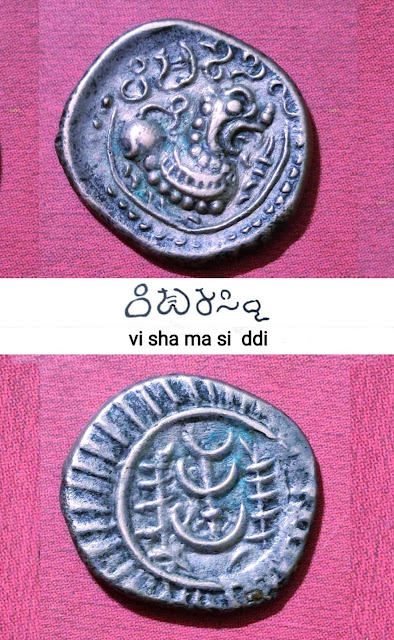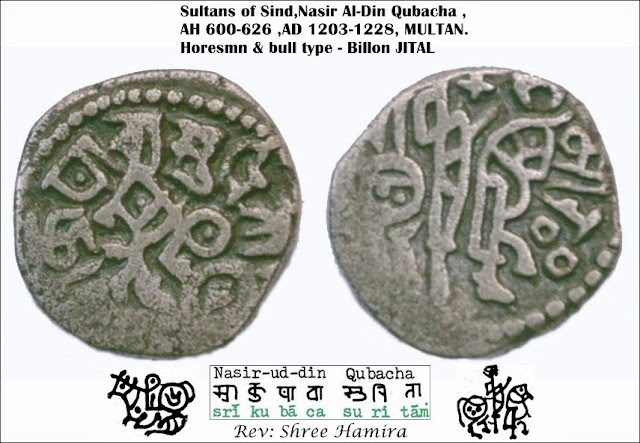Kubja Vishnuvardhana I "Vishama-Siddhi" (reigned 624–641 AD) was the brother of Badami Chalukyan king Pulakeshin II .Copper Base Alloy coin, Obverse side : a roaring lion standing facing right with one foreleg raised, tail curled on the back, dagger in front, legend : "VishamaSiddi"(conqueror of difficulties) -(we can see the earliest example for evoluted brahmi script in to southern characters ie: early Kannada script " Reverse side : a bold Srivatsa between two tridents, a linear border with serrations around the field .
The great Badami Chalyukan king, Pulakeshi II (610–642 CE) conquered territory corresponding to the coastal districts of modern Andhra Pradesh from the Vishnukundina kingdom in 615 AD , and he appointed his brother Kubja Vishnuvardhana as the governor of this newly acquired territory Vishnuvardhana ruled over a kingdom extending from Nellore toVisakhapatnam. He assumed the title of Vishamasiddhi (conqueror of difficulties). Vishnuvardhana participated in the wars between his brother Pulakeshin II and the Pallava Narasimhavarma I and probably lost his life in battle in 641AD .We come to know from Kopparam epigraph dated in AD 631, that Pulakesin II permitted Kubja Vishnuvardhana to rule independently. Chalukyas were originally of Kannada stock ,they continued to rule Vengi region in Andhra and later they came to known as " Vengi Chalukyas " they ruled (c. 624 CE) coastal Andhra as independent sovereigns for more than four and a half centuries from AD 631 to 1070. Note: The Eastern Chalukya rulers continued minting their coins in the same fashion as their predecessors, the Vishnukundins. Coins of this ruler are to be known in two different arrangements of Brahmi legends, one with a long title 'Shri Vishama Siddhi' and another one struck at a later stage with the shortened form of Brahmi legend 'Shri Vishama'. Inscription credit: M Nithyananda Pai .



















































